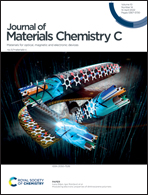Recent advances in the 3D printing of electrically conductive hydrogels for flexible electronics
Abstract
Compared with traditional semiconductor devices, flexible electronic devices have a wider application prospect in information, energy, medical, national defense and other fields due to their unique flexibility, ductility, and machinability with high efficiency and low cost. Conductive hydrogels are excellent candidate materials for flexible electronic devices due to their biocompatibility, physico-mechanical properties, excellent electrical conductivity and multiple stimulus response characteristics. In order to construct the structure of the conductive hydrogel used in flexible electronic devices, traditional preparation methods have some limitations. 3D printing technology has greatly promoted the development of flexible electronic devices based on conductive hydrogels due to its advantages of flexible printing methods in building complex physical structures. 3D printing of conductive hydrogels is an important and rapidly developing research field, so it is of great significance to write a review on the research status of this topic. Therefore, this paper reviews the research progress of conductive hydrogel 3D printing for flexible electronics, with an emphasis on 3D printing methods, classification and material synthesis methods, and application fields. The future opportunities and challenges are also discussed in order to provide more guidance for researchers in this field.



 Please wait while we load your content...
Please wait while we load your content...